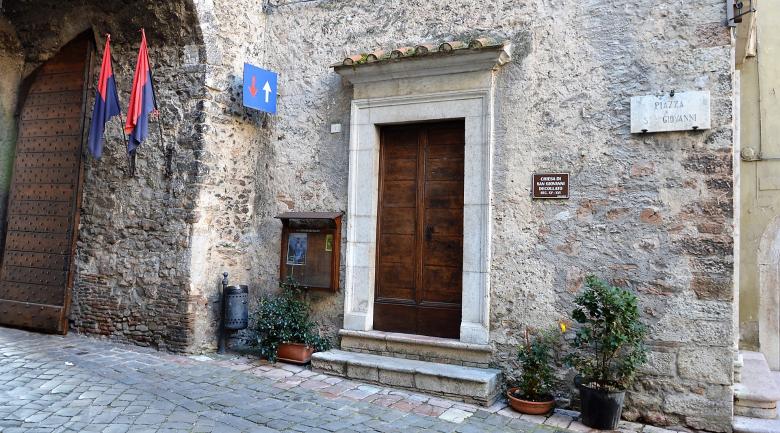Between the 14th and 16th centuries, significant changes were made to the building, to adapt the space to the new demands of the increasingly large Franciscan community, situated at an important crossroads, a strategic staging post for friars on their pilgrimages. The gabled facade, with its central gable decorated with hanging arches, clearly shows the addition of two aisles (1437). Antonio da Orvieto constructed the elegant bell tower, decorated with multi-coloured green and blue majolica (1445). In addition to the opening of the Capella di San Bernardino da Siena, dedicated to the founder of the Observant Franciscans who visited Terni a number of times, among the most important changes of considerable artistic and cultural value was the early 15th-century construction of the Paradisi family chapel, to the right of the presbytery, decorated with frescoes of the Last Judgment, completed around 1450 by the Foligno painter Bartolomeo di Tommaso. The commissioner of the work, Monaldo Paradisi, linked to the Observant Franciscans and passionate supporter of the reforms preached by Giacomo della Marca (the successor of Bernardino da Siena), wanted an image of one of the saint's many sermons to be placed there. San Bernardino would frequently impress his audience by recounting the rewards and punishments to be expected at the end of their lives.
The sanctuary is now part of the Via di Francesco itinerary and the journey of the first Franciscan martyrs, an interesting way to discover the sites and history of the first Franciscan martyrs.





























